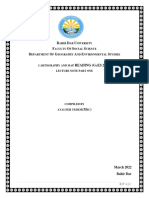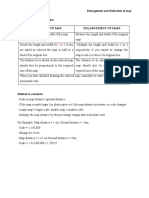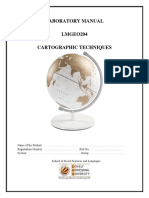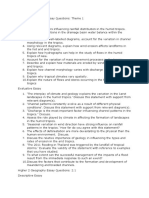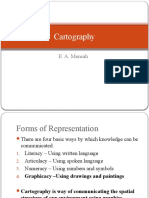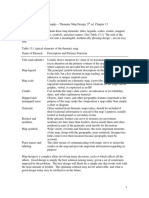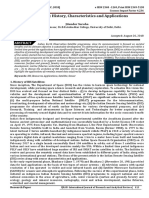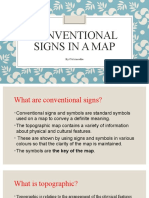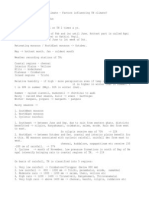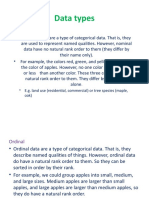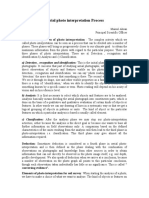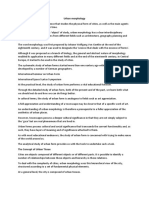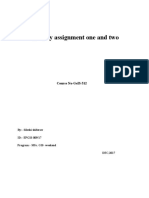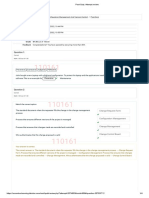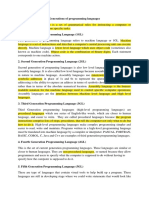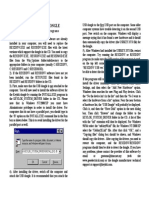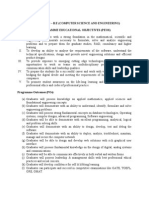Chapter 1 Introduction
1.1 Definition
The word Cartography is derived from two words Carto (latin word) means paper and Graphy
(greek word) means writing which mean Cartography is to write something in a piece of paper.
The Cartography has been defined in several ways as follows:
Cartography is an art, science and technology of making maps together with their study as sci-
entific documents and works of art and their use (Multilingual dictionary of technical terms in
cartography).
Cartography is aggregate of scientific, artistic and technical studies and operation carried out on the
basis of the results of direct observation or from exploitation of documentation for the elaboration
and preparation of map (International Cartographic Association).
Cartography is the science of surveying and mapping and embraces all phases of mapping from data
collection to data processing and data presentation thus including surveying, aerial photography,
topography, toponomy, photogrammetry and cartography proper(United Nations).
After the advent of computer system in mapping and the development of geographical information
systems in the field of mapping, new definitions of cartography have gradually emerged and some
of them are as follows:
Cartography is the information transfer that is centered on a spatial database which can be con-
sidered in itself a multi-faceted model of geographic reality. Such a spatial database then serves as
the central core of an entire sequence of cartographic processes, receiving various data inputs and
dispersing various types of information products (Guptil and Starr, 1984).
Cartography is the organization, presentation, communication, and utilization of geo-information
in graphic, digital, or tactile form. It can include all stages from data preparation to end use in
the creation of maps and related spatial information products. (Taylor 1991).
Cartography is a branch of science and technology dealing with the preparation, pro-
duction/reproduction, and study of cartographic products. (Suresh Man Shrestha,
Cartography and GIS)
�Er. Dinesh Khatri DGE Cartography (EG 2201 GE) Year: II Part: II
1.2 History of Cartography
Greek Cartography
The ancient Greeks were the first to give a scientific character to Cartography. Greeks had made
a very substantial contribution to the science of cartography from earlier times. The most notable
among Greek Cartographers is Claudius Ptolemy (90-168 AD) who made a map of the world known
at that time and wrote 8 volumes of “Geographia”. It is considered to be a very important work
on cartography. It is who laid the foundation of mathematical geography, projections, methods of
astronomical observations, etc.
Cartography during the Middle Ages
It was during the Greek period that two notable attempts were made to measure the size of the
Earth. One was made by Eratosthenes in about 200 BC and the other by Posidonious in 130 BC.
It is now known that the valued work out by the former was better than that done by Posidonious
but unfortunately, at that time, it was believed that the latter’s value was better and was used by
Ptolemy which caused errors in his work.
The Past-Greek and the Early Medieval Period
After the Greeks, came the Romans, who had no interest in mathematical Cartography. It is also
known that the valuable foundation work done by the Greeks earlier was lost. As such cartography
received a setback during the Middle Ages. Cartographic activity was still going on but it was of
an inferior standard compared to those achieved by the Greeks. During this period many world
maps were made. One such map known as “Orbis Terrarium” the circuit of the world, in which
the great continents are shown in a somewhat asymmetrical arrangement. With the onset of the
Middle Ages, Cartography continued its downward path. Based on the Roman maps and under
the influence of Christian theologians all kinds of maps were being prepared but hardly any of this
work deserved to be called a ‘proper’ map. It is interesting to note that while the science of car-
tography was passing through dark days in the Middle Ages in Europe, the Arabian Cartographers
were making steady progress. Based on the works of Ptolemy, which had been acquired by the
Arabians, and by their own knowledge in the fields of mathematics and astronomy, they were pro-
ducing better maps. Edrisi produced a world map in 1154, based on a rough rectangular projection.
The Late Medieval Period (Upto 1500 A.D.)
During the later part of this period, there was much trading activity in the Mediterranean area.
Ships laden with merchandise from different countries were crisscrossing the Mediterranean and
the Black Sea. To help navigate the ships, a new kind of chart called “Portolan Charts” emerged.
By far, they were much superior to the imaginary and inaccurate maps of the earlier period. The
origin of the Portolan chart is not clear but it is believed that they were based on some kind of
compass survey; by which time the instrument had come into use. These charts showed the coastal
features and names correctly. The peak of the Portolan tradition was reached in the Catalan Atlas
of 1375, which has a wider coverage, following the text of Marco Polo it shows Eastern Asia, the
Deccan Peninsula, the Indian Ocean areas in a much better way than hitherto.
2
�Er. Dinesh Khatri DGE Cartography (EG 2201 GE) Year: II Part: II
The Early Modern Period (from 1500 to 1800 A.D.)
During the period the science of Cartography had substantially recovered from the setback of
medieval times. Some of the factors were:
• Rediscovery of Ptolemy’s work.
• Detection and rectification of errors in Ptolemy’s work form more modern sources e.g. Por-
tolan Charts, new maps, etc.
• Invention of printing and engraving which increased the circulation of maps and aroused
interest among a larger section of the people.
• Great discoveries - This was an age when long voyages were being undertaken to discover new
lands, which helped to locate new areas and correct earlier misconceptions. The discovery of
America by Columbus in about 1490 and the circumnavigation of the world by Magellan in
1500 are two important voyages that contributed to the advancement of Cartography.
By the end of this period, Cartographic knowledge had increased many folds and the importance
of Cartography was fully realized. There was much activity all over Europe and each nation vied
with other for producing maps. Maps and charts were being produced in England, Netherlands,
France, Switzerland, Germany, Italy, Spain, Russia, etc.
The Recent Period (from 1800 A.D. onwards)
This period marks the setting up of Cartography on a scientific footing. This being a period of
colonial expansions, there was an ever-increasing demand for accurate maps and charts of all kinds.
Many countries had set up their own National Survey Organizations and started work on scientific
lines, with the help of new scientific concepts and better instruments. The French were among the
first and under the leadership of the famous Cassini they undertook the survey of France based on
triangulation. Other nations also followed the British set up their Ordnance Survey. The various
other European Nations set about their work in a similar way. Advancement of printing technology,
and the discoveries in this field of electronics - all have contributed to the present stature achieved
by the science of Cartography.
Modern ERA
Maps became increasingly accurate and factual during the 17th, 18th and 19th centuries with the
application of scientific methods. Many countries undertook national mapping programs. Nonethe-
less, much of the world was poorly known until the widespread use of aerial photography following
World War I. Modern cartography is based on a combination of ground observations and remote
sensing.
Geographic Information System
GIS emerged in the 1970-80s period. GIS represents a major shift in the cartography paradigm.
In traditional (paper) cartography, the map was both the database and the display of geographic
information. For GIS, the database, analysis, and display are physically and conceptually sep-
arate aspects of handling geographic data. Geographic information systems comprise computer
3
�Er. Dinesh Khatri DGE Cartography (EG 2201 GE) Year: II Part: II
hardware, software, digital data, people, organizations, and institutions for collecting, storing, an-
alyzing, and displaying geo-referenced information about the Earth (Nyerges 1993). Map making
is not now limited to the activities of the individual nations only but became an international
phenomenon, valuable work in being done by international co-operation which is reflected by such
maps as International Map of the World Series and the various maps of the International Civil
Aviation Organization, International Global Mapping, etc. Cartography is now concerned with
preparation of variety of maps used for basic reference and operational purposes. This category
includes topographic maps, hydrographic maps, and aeronautical charts. Another major contribu-
tion of cartography is preparation of maps for general reference and for educational purposes. This
category includes small scale thematic maps, atlas, road maps, tourist maps etc.
History of Nepal
- In 1952 BS (1895AD) survey section was established in Army Headquarters. And Sindhupalanch-
wok and Kavrepalanchwok District mapped the chain survey method “Janjir Napi”.
- In 1980 BS cadastral survey was conducted in the Bhaktapur district using a plane table, chain,
and compass.
In Topographic map
• 1”:4 miles maps:Published in the early ’30s, published by a survey of India, contour interval
500ft., sheet cover 10 latitudes and 10 longitudes, 26 no.of sheets, 6 colors are used.
• US Army Maps:Published in early 50’s, published by us army,1:250000 scale of map, con-
tour interval 500ft., sheet cover 10 latitude and 10 30’longitude, 17 no.of sheets, 5 colours are
used.
• 1”:1 mile maps: Published in early 50’s to 70’s, published by survey of india, contour
interval 100ft in mountain and 50ft terai area., sheet cover 15’ latitude and 15’ longitude, 266
no.of sheets, 7colours are used.
• 1”:8 mile maps: Published in early 1997, published by the Department of Survey UK,
contour interval 1000ft, 2 no.of sheets.
• Russian Maps: Published by Union of Soviet Socialist Republics (USSR), contour interval
80 meters., The sheet covers 40’ latitude and 10 longitude, 37 no.of sheets, 5 colours are used.
• Lumbini zone maps: Published in early 1993, published by JICA/survey Department,
Nepal, Scale of Map 1:25000, 81no. of sheets, 5 colors are used.
• Eastern Nepal Topographic map: Published in early 1997, published by the Survey
Department, Nepal, the Scale of Map 1:25000(255 sheets),1:50000(37 sheets), 6 colors are
used.
• Western Nepal Topographic map: Published in early 2001, published by the Survey
Department, Nepal, the Scale of Map 1:25000(254 sheets),1:50000(79 sheets), 6 colors are
used.
• New Administrative Map: The government of Nepal Published the latest administrative
map of Nepal including its integral part limpiyadhura in the map on May 20,2020
4
�Er. Dinesh Khatri DGE Cartography (EG 2201 GE) Year: II Part: II
Figure 1: Adminstrative Map Of Nepal
1.3 Scope and uses of Cartography
Scope of Cartography
Map-making involves great efforts by many persons. The entire process of producing maps right
from the beginning to the end includes the following stages:
• Determination of the shape and size of the Earth
• Provision of Geodetic control
• Provision of topographic control including the height control.
• Detail surveying or collection of information from field.
• Aerial photography or Satellite image acquisition.
• Photogrammetric surveys, extension of control and detail survey.
• Map designing, map compilation and map drawing.
• Map printing.
It is not feasible to include all the above stages in cartography. Hence the scope of cartography is
limited to map designing, compilation, map drawing, and presentation.
5
�Er. Dinesh Khatri DGE Cartography (EG 2201 GE) Year: II Part: II
Uses Of cartography
Maps, whether they are generated through freehand drawing, drawing tools, or computer technol-
ogy, are an integral part of our daily lives. They serve a multitude of purposes and are created based
on the principles and technology of cartography. In essence, maps and cartography are inextricably
linked; one cannot exist without the other.
Cartography is the science and art of map-making, encompassing various techniques and principles
for representing geographic information accurately. It provides the foundation upon which maps
are constructed, ensuring their reliability and usefulness across a wide range of applications.
1. Navigation: Maps are indispensable for navigation, aiding pilots, sailors, and travelers in
finding their way. Aeronautical charts, for instance, are essential for aerial navigation.
2. Urban Planning: City planners and architects rely on cartographic tools to design and
manage urban areas effectively. Maps visualize zoning, infrastructure, and population density,
facilitating sustainable city development.
3. Natural Resource Management: Cartography assists in the management of natural re-
sources like forests and minerals, enabling the tracking of resource distribution and conserva-
tion efforts.
4. Environmental Studies: Environmentalists and scientists use maps to analyze data related
to climate change, wildlife habitats, and pollution, supporting decision-making for conserva-
tion.
5. Disaster Management: Maps play a vital role in disaster preparedness and response,
helping identify vulnerable areas and plan evacuation routes.
6. Tourism and Recreation: Maps are essential for tourists exploring new destinations and
outdoor enthusiasts seeking information on terrain and trails.
7. Census and Demographics: Governments use cartography to conduct censuses and visu-
alize population distribution, migration patterns, and socio-economic disparities.
8. Education and Research: Cartography is a crucial educational tool, aiding students and
researchers in understanding geographical concepts and historical changes.
6
�Er. Dinesh Khatri DGE Cartography (EG 2201 GE) Year: II Part: II
References
1. Rabin Kaji Sharma —(Cartography,Preliminary Knowledge of Cartography)
2. Suresh M. Shrestha — (Cartography And Geographic Information System)
3. Survey Department —- (https://dos.gov.np/downloads/nepal-map)

